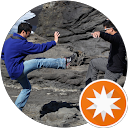Hien Luong Bridge and the 17th Parallel: Symbol of a Divided Nation
Hien Luong Bridge (Cầu Hiền Lương) and the Bến Hải River form the poignant heart of Vietnam’s former Demilitarized Zone (DMZ) in Quang Tri Province. This site is not merely a bridge; it represents the deep sorrow of national separation and the fierce, enduring desire for reunification. Visitors come here to walk in the footsteps of history and absorb the powerful symbolism of this historic boundary.
The Dividing Line: History and the Geneva Accords
The bridge’s significance began in 1954 with the signing of the Geneva Accords.
Temporary Boundary: The Accords stipulated a temporary military demarcation line—the 17th Parallel—dividing Vietnam into North and South. Crucially, the Bến Hải River served as the physical border along this parallel.
The Divided Bridge: Hien Luong Bridge, which crosses the Bến Hải River, became the most immediate and visible symbol of this separation. Officials divided the bridge precisely in half. Consequentially, each side painted its half in a different color: blue for the North (administered by the Democratic Republic of Vietnam) and yellow for the South (administered by the Republic of Vietnam).
“The Battle of Colors”: Over the 21 years of division, the two sides frequently engaged in non-violent, symbolic “battles.” This included a famous “battle of colors,” where each side continually repainted its half brighter and stronger than the other. They also competed in erecting progressively taller flagpoles to fly their respective flags, turning the site into a tense, psychological frontline.

What to See at the DMZ Relic Complex
The complex surrounding Hien Luong Bridge preserves and presents this history vividly, offering key points of interest on both the North and South banks.
The Restored Bridge: The current bridge is a faithful restoration of the 1952 French-built structure that existed during the separation. Visitors can walk the length of the bridge, literally crossing the line that once separated the nation. Notice the two distinct paint colors still marking the division.
The North Bank Flagpole (Bờ Bắc): A massive flagpole, which the North Vietnamese continually raised higher to assert their will, stands proudly. Nearby, a reconstructed Border Police Station allows visitors to see where the northern forces monitored the demarcation line.
The South Bank Monuments (Bờ Nam): On the southern side, explore the “Aspiration for Reunification” Monument (Tượng đài Khát vọng Thống nhất). This powerful sculpture complex depicts families separated by the river and embodies the collective longing for a unified Vietnam. In addition, you can visit the Museum of the 17th Parallel, which showcases artifacts, photographs, and historical narratives about the DMZ, the bridge, and the suffering caused by the division.
The Bến Hải River: The peaceful Bến Hải River today belies its history as a military demarcation line, allowing for quiet reflection on the decades of conflict it endured.

Visitor Information and Practical Details
As a national special historical relic, the site is well-maintained and easily accessible.
Address: 2332+QM4, Cầu Hiền Lương (cũ), Trung Hải, Gio Linh, Quảng Trị, Vietnam (Located directly on National Highway 1A).
Opening Hours: The site is generally open daily from morning until late afternoon (typically 7:00 AM to 5:00 PM).
Entrance Fee: Tourists generally pay a small entrance fee to access the complex, including the museum and monuments. This fee is approximately 40,000 VND to 50,000 VND per adult.
Getting There: The most common way to visit Hien Luong Bridge is by joining a DMZ tour from Hue or Dong Hoi, or by arranging a private car or taxi transfer, as it lies about 70 km north of Hue.
Hien Luong Bridge is a compulsory stop for anyone exploring Quang Tri’s historical DMZ route, forcing visitors to confront the human cost of political division.




